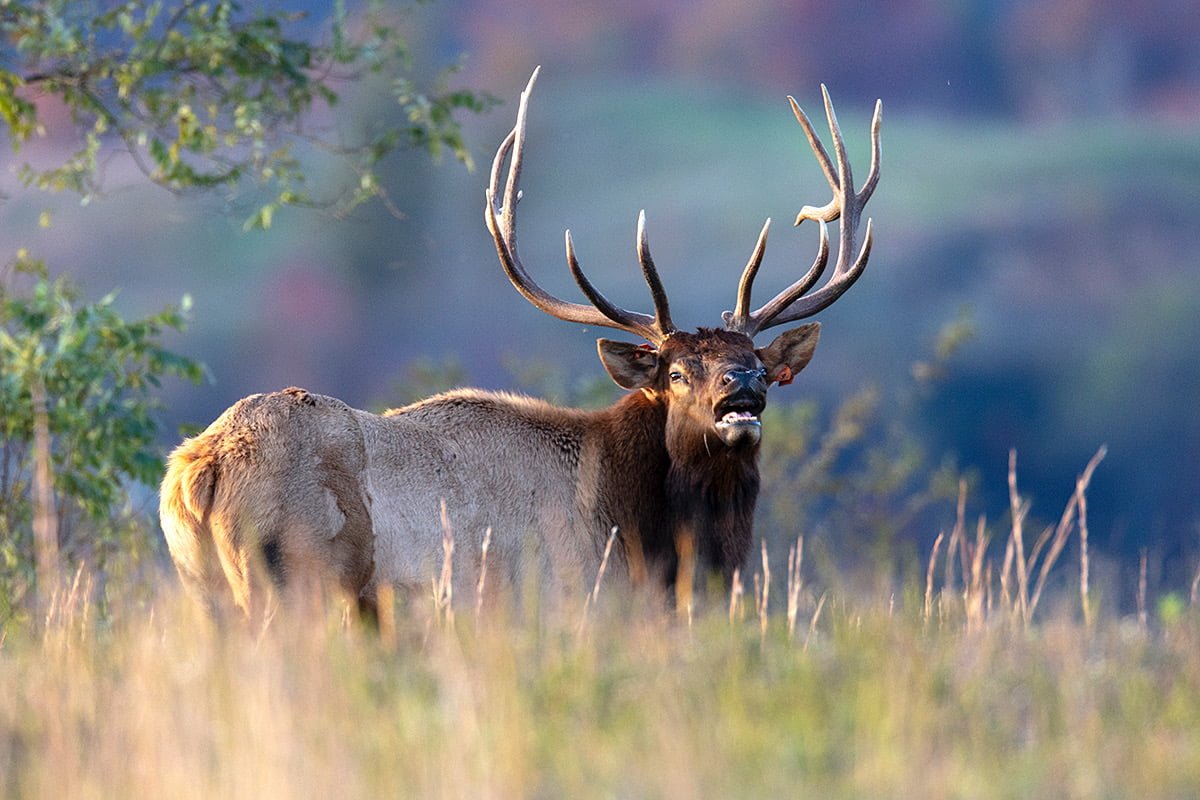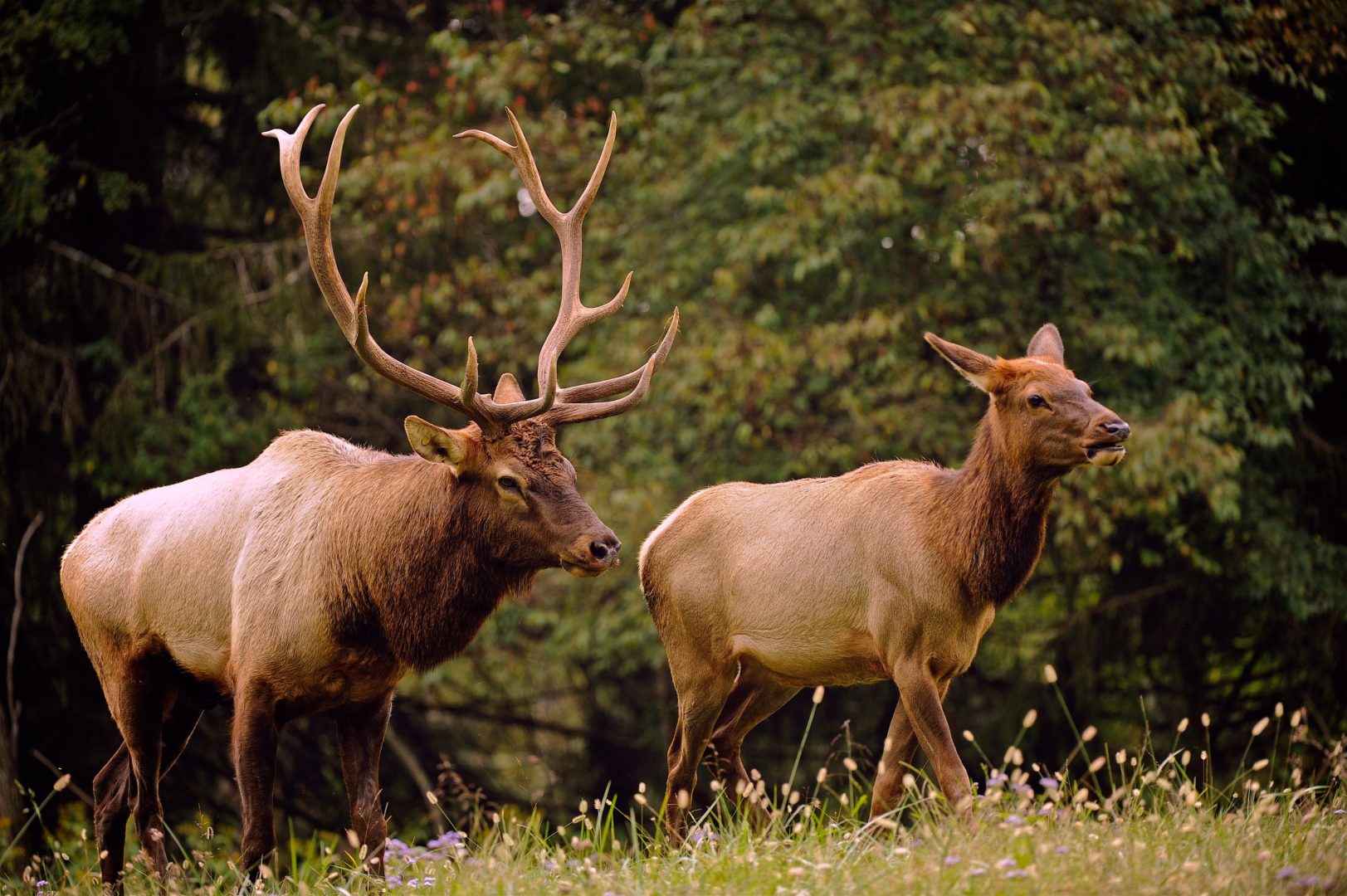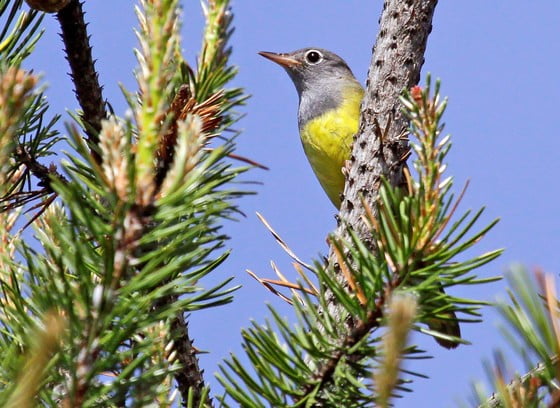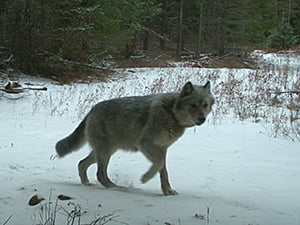
LOGAN, W.VA. — The West Virginia elk restoration project is wrapping up another successful summer at the Tomblin Wildlife Management Area in Logan County and the state’s herd continues to grow with the addition of at least 15 calves.
Over the summer, wildlife managers for the West Virginia Division of Natural Resources were able to confirm the births of about 15 calves, which brings the total elk population to about 85.
“Summer 2020 has been really good for the elk in southern West Virginia,” said Randy Kelley, elk project leader for the WVDNR. “Population growth is a slow process because elk only have one new calf per female, but the herd is growing at a rate I think we’ll be happy with over time.”

As the elk restoration project comes to the end of its fifth year, the herd has grown to a point where where wildlife managers won’t be able to count of all the elk, Kelley said. Most of the elk that were transplanted from the Land Between the Lakes National Recreation Area in western Kentucky and the Arizona Game and Fish Department have radio collars, but not all of the native born elk have tracking devices.
“Elk are really good at hiding their calves and sometimes it takes us the course of a summer to figure out how many we have, but we feel like the elk have had a good reproductive year and we hope to sustain that,” Kelley said.
A Long Journey Back Home for West Virginia Elk
In 2015, the WVDNR started its elk restoration project at the Tomblin WMA, which includes reclaimed strip mines and open spaces with freshly seeded grass, which is elk’s preferred habitat. Elk were once native in West Virginia, but the species disappeared in the 1800s due to timbering and over hunting.
The West Virginia elk restoration project is a major conservation initiative and would not be possible without the help of key partners like the Rocky Mountain Elk Foundation, which have helped fund all stages of the project so far, and The Conservation Fund, which helped the WVDNR acquire tens of thousands of acres of land.
West Virginia’s elk promote tourism and wildlife viewing
Just the chance to catch a glimpse of West Virginia’s elk has made wildlife viewing tours a popular attraction at the Tomblin WMA over the last few years. This year, the tours were cancelled due to the ongoing COVID-19 pandemic, but the WMA remains open to the public.
“Tomblin is a public area where people can come and try to see the elk when the bulls are in rut and bugling,” Kelley said. “Getting here involves a little more shoe leather because you’ll have to hike in to get access, but it’s such a beautiful place.”

